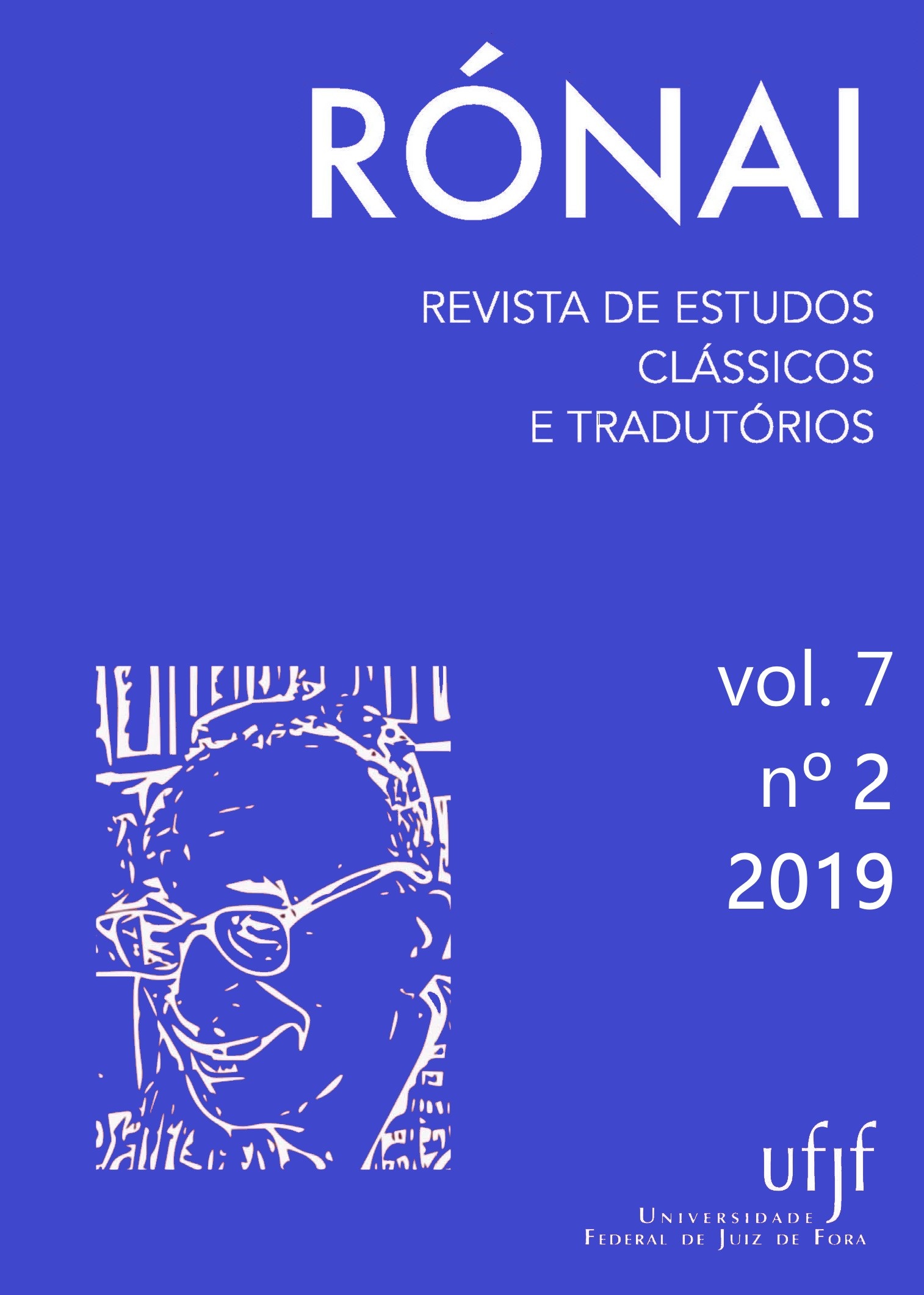Uma reflexão sobre a obscura diferença entre adaptação e tradução, de Mombe Michael Ngongeh e Felix Awung
DOI:
https://doi.org/10.34019/2318-3446.2019.v7.29239Palavras-chave:
estudos da tradução, estudos da adaptação, procedimentos de tradução, Ola Rotimi, SófoclesResumo
Este artigo de Mombe Michael Ngongeh e Felix Awung examina várias definições e tipos de adaptação, abordando algumas razões pelas quais a adaptação é realizada. Discute, ainda, quais são as técnicas de adaptação e a própria adaptação enquanto técnica de tradução. Na demarcação dos limites entre adaptação e tradução, muitos críticos não estabeleceram uma diferença clara. Isso constitui um problema tanto para os Estudos da Tradução quanto para os Estudos da Adaptação. Este artigo objetiva tornar mais clara essa distinção através da utilização de exemplos concretos a título de ilustração.
Downloads
Referências
ALLEN, G. Intertextuality. London: Routledge, 2000.
BALONIS, J. The practice of Adaptation: Turning Facts and Fiction into Theatre. Unpublished Thesis, Queensland University of Technology, 2012.
BASSNETT, Susan. Reflections on Translation. Bristol, UK: Multilingual Matters, 2011.
BASTIN, G. Adaptation. In: BAKER, M.; SALDANHA, G. Routledge Encyclopedia of Translation Studies. New York: Routledge, 2011.
BASTIN, G. La notion d’adaptation en traduction. Meta: journal des traducteurs / Meta: Translators’ Journal, v. 38, n. 3, 1993, p. 473-478.
BASTIN, Ge. L. ¿Traducir o Adaptar? Caracas: Universidad Central de Venezuela, CDCH/FHE, 1998.
FAIQ, S. Author-cum-translator: position and power in translating oneself. Paper presented at the conference Translation and Power, University of Warwick, England, July 1997.
KUSSMAUL, P. Training the translator. Amsterdam: John Benjamins Publishing Company, 1995.
LUNGU, B. G. L’adaptation Stratégie de traduction : entre norme et création http://www.academia.edu/1249763/Ladaptation_Strat%C3%A9gie_de_traduction_entre_norme_et_cr%C3%A9ation 22/4/2016.
MILTON, J. Translation Studies and Adaptation Studies. In: Translation Research Projects 2, PYM. A.; PEREKRESTENKO, A. (eds), Tarragona: Intercultural Studies Group, 2009. p. 51-58.
____ Between the cat and the devil: Adaptation Studies and Translation Studies. Journal of Adaptation in Film & Performance, v. 2, n. 1, May 2009, p. 47-64.
NIDA, E. Principles of correspondence. In: VENUTI, L. (ed.), The Translation studies reader (2nd ed.) (pp. 153-167). New York: Routledge, 2004.
ROTIMI, O. The Gods Are Not to Blame. London: Oxford University Pres, 1971.
SANDERS, J. Adaptation and Appropriation. New York and London: Routledge, 2006.
SCHULTZ. C. Translation or adaptation? Authors writing in a second Language: an analysis of stefanheym’s “hostages” and “der fall Glasenapp”, unpublished thesis, University of Illinois: Urbana-Champaign, 2010.
SÓFOCLES. Rei Édipo. Tradução J. B. de Mello e Sousa. EbooksBrasil. Edição digitalizada de Clássicos Jackson, v. 22, 2005.
SOPHOCLES. Oedipus The King. Translated by F. Storr, New York: The Heritage Press, 1958.
VENUTI, L. Introduction. In: VENUTI, L. (ed.) The Translation studies Reader (2nd ed.). New York: Routledge, 2004.
VENUTI, L. The Translator’s Invisibility: A History of Translation. London & New York: Routledge, 1995.
VENUTI. L. The Translator’s Invisibility: A History of Translation. N.Y.: Routledge, 2000.
VINAY, J.-P.; DARBELNET, J. Comparative Stylistics of French and English. Philadelphia: John Benjamins, 1995.
WHITTLESEY, H. A Typology of Derivatives: Translation, Transposition, Adaptation. Translation Journal, v. 16, n. 2, April 2012.
WIKIPEDIA. Adapting for film. https://en.wikipedia.org/wiki/Literary_adaptation.
WIKIPEDIA. Law & Order: Criminal Intent, and Paris enquêtes criminelles. https://en.wikipedia.org/wiki/List_of_French_adaptations_of_television_series_from_other_countries (Consulted on 24/4/2016).
Downloads
Publicado
Como Citar
Edição
Seção
Licença
Copyright (c) 2019 Larissa Silva Leitão Daroda, Adauto Lúcio Caetano Villela

Este trabalho está licenciado sob uma licença Creative Commons Attribution 4.0 International License.
Direitos Autorais
Autores que publicam nesta revista concordam com os seguintes termos:
1. Autores e autoras mantém os direitos autorais e concedem à revista o direito de primeira publicação, sendo a publicação licenciada sob a Creative Commons Attribution License 4.0 Internacional.
2. Os autores e autoras têm permissão e são estimulados(as) a publicar e compartilhar o trabalho com reconhecimento da publicação inicial nesta revista.
3. Os autores e autoras dos trabalhos aprovados autorizam a revista a ceder o conteúdo de seus trabalhos, após sua publicação, para reprodução em indexadores de conteúdo, bibliotecas virtuais e similares.
Para mais informações sobre a Creative Commons Attribution 4.0 International License, acessar: https://creativecommons.org/licenses/by/4.0/
Isenção editorial
O conteúdo dos artigos publicados é de inteira e exclusiva responsabilidade de seus autores, não representando a posição oficial da Rónai - Revista de Estudos Clássicos e Literários ou do Faculdade de Letras da Universidade Federal de Juiz de Fora ou das instituições parceiras.



